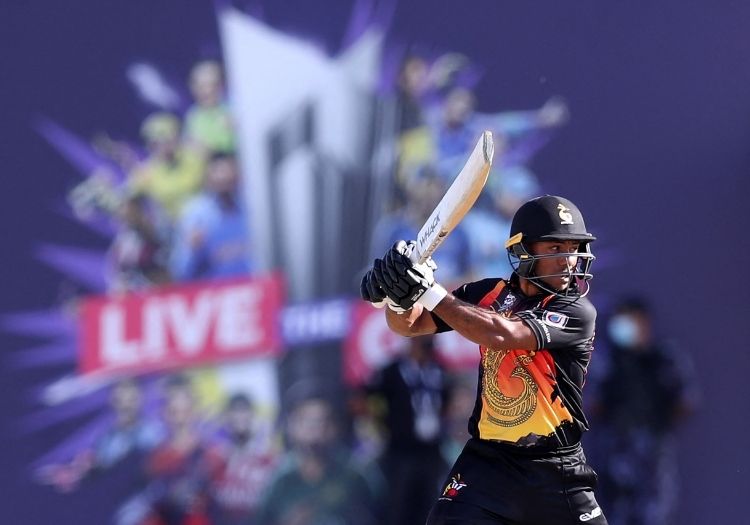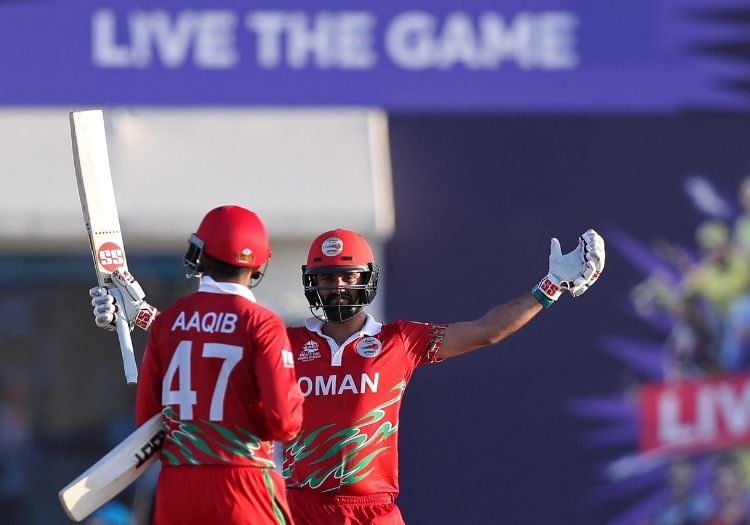NICK FRIEND: I can think of few more fitting fixtures with which to kick off this tournament: two associate nations plucked from geographically contrasting lands but bound by journeys to this stage that only they can truly understand

If you think this first phase is a foregone conclusion, then you haven’t been paying attention to the strength in depth across the global game. And if you think these teams should have to take part in what is effectively an additional qualifying process, then you’re disrespecting the toilsome graft that comes with the territory of being an associate nation. It might not be branded as such, but much of the cricketing world will consider the start to be when the Super 12s get underway.
These countries deserve more than that, having come through their pressure-cooker two winters ago to reach this point. If you’ve never lived associate cricket, you can’t quite fully grasp its intricacies nor the ramifications resting on each and every game. “It’s not just about losing a tournament, it’s livelihoods at stake,” Netherlands head coach Ryan Campbell put it to me in 2019. “You lose your funding; you lose this or that; it is cut-throat stuff.”
I’m fortunate to be able to say that I’ve worked for an associate member as a coach in a far-flung part of the cricketing landscape, witnessing first-hand the impact of relegations into the relative purgatory that awaits beneath World Cricket League level, without the consistency of a regular calendar or a clear route back into the fold. That experience was at the lower end of the spectrum, in Argentina, but that hand-to-mouth attitude never changes. For Papua New Guinea, playing at their first men’s World Cup, this is it. For it, read everything.
Twelve years ago, Argentina and Papua New Guinea met in Buenos Aires in Division Three of the World Cricket League. Afghanistan won the competition, Argentina finished last, Papua New Guinea were third. Assad Vala, PNG’s current captain, is the only survivor from that team, but the conflicting fortunes of those nations in the years since are a sobering reminder of the ruthlessness at stake on the road to The Big Dance.
Those who came before Lega Siaka, Tony Ura and co are just as important: Rarua Dikana, John Ovia, Jamie Brazier, Vani Morea and the rest of their 2009 teammates. Some had never been on a plane until flying to the UAE in 2019; Port Moresby and Dubai have quite different skylines, you won’t be surprised to learn.
Oman, meanwhile, are emergency co-hosts – a first for an associate member. Just let the significance of that fact sink in. They produced a performance to match the symbolism of the day: Bilal Khan, their star seamer who bowled them to this stage two years ago, began proceedings with a wicket maiden, before Zeeshan Maqsood ran through PNG’s middle order. It was left to Aqab Ilyas and Jatinder Singh to stylishly knock off the runs without loss.
“We have an amateur structure and make no mistake: we will maintain that,” Pankaj Khimji explained to The Cricketer earlier this year. He is the chairman of the national governing body, and this is their second successive appearance at this competition. “The players are amateur, the board are amateur – we do not have any financial privileges. If you are involved in Oman Cricket, you do it for the right reasons. And we always come out as the underdogs that way.”

Charles Amini and Assad Vala provided a positive on a difficult day on the field for Papua New Guinea
In 2005, they reached a World Cup Qualifier despite the country not having a single grass pitch. In 2007, a study found Muscat to be the driest cricketing centre on earth. When the MCC toured in 2010, the games were played on an artificial wicket inside a running track. A $5.2million project, though, pushed through the construction of two grounds and an indoor school.
A decade later, the World Cup roadshow has arrived, albeit in a faux qualifier that need not exist: how many times must they prove themselves before being granted access to the competition proper? Papua New Guinea had to come through an East Asia-Pacific Sub Regional Qualifier against Vanuatu, Samoa and Fiji just to make it to the East-Asia Pacific Regional Finals Qualifier a year later against Vanuatu and the Philippines, before even reaching the main qualifier.
At the end of those travails, though, is a T20 World Cup. You might consider it a minor semantic shift, but until 2016 this was the World T20. Check the literature around the inaugural 2007 tournament in South Africa, where some called it a “championship” and others carefully tiptoed around attributing the competition with a title that would hand it credence as a major global event, and you will see how far this format – the global growth format – has come.
And so, while some might complain that this tournament opener wasn’t a battle of the big boys, there was an entirely appropriate poignancy to the ribbon being cut by a pair of countries who have benefited from the T20 olive branch offered by international cricket's leap of faith into what was once considered a dirty unknown.
Papua New Guinea, whose kit might just be the greatest to grace an ICC event, play this format almost exclusively back home, such is the shortage of grass pitches that means focusing centrally on T20 is the best way of maximising playing time for as wide a player-pool as possible. Oman’s rise to this moment is a similarly remarkable triumph of passionate willpower.
Of the eight teams doing battle this week for places in the next, these two arrived as perhaps the least fancied. But overcoming the odds is part of what associate nations do: it is how Ireland (before full membership), Scotland and the Netherlands have all beaten England in the last decade. It is why wins over Test-playing nations are treated with fewer and fewer raised eyebrows in the mainstream. They remain upsets in terms of finance, infrastructure and reputation, but less so in terms of quality. And there would doubtless be more such results, if only they were given the chance.

Aqib Ilyas and Zeeshan Maqsood celebrate Oman's 10-wicket win
Of course, among the associate nations themselves, there is no surprise at all. They are a tight-knit community, all too aware of the similar challenges faced across the board but under no illusions as to the shelf-loads of talent hovering beyond the traditional status quo: the short shrift given by Netherlands captain Pieter Seelaar to a question last week that appeared to write off Namibia’s qualification hopes was testament to that comradeship.
And when we talk about spirit, perhaps no one better represents it than Papua New Guinea, an island whose national stadium is named after the Amini family, of which Charles is the latest generation to turn out for his country – following in the footsteps of his brother, mother, father and grandfather. Crucially, though, he is the first to appear at a World Cup.
The family pride at his qualification, he told The Cricketer two years ago, was off the charts. PNG were never better placed in this game than during Amini’s stay at the crease: he was run out calamitously, but only once he had swaggered his way to 37 off 26 balls. They never recovered, even if Vala wrote another chapter into a wonderful international career by reaching fifty, but there will be no individual blame apportioned: they win and lose as a team.
“Not everyone is from the same village, but we’re all from one city,” Amini said. “We have all grown up playing cricket together since under-12 and under-U15 through to right now. I think that’s the key. We spend every day with each other. That bond that we all have together is just unreal. A lot of teams say that to us: ‘You guys just look like a totally different team to all the others.’ They can feel how close we all are.”
Rugby league is the country’s first sport, but that is changing, though, as PNG have crept onto the global stage: the broadcast rights provider for this tournament has come to a deal to increase its visibility back home. Joe Dawes, their head coach until quitting earlier this year, told The Cricketer in 2019 how his backroom staff had been swamped by the local community as they arrived back home from the qualifier.
“We were met by probably 1,000 people at the airport, cheering and giving us banners,” he recalled. “I was talking to one of my assistant coaches and he was saying that he walked through the village and his hands were sore because everyone just wants to high-five him and congratulate him. There were a couple of highlanders, which is a fairly wild part of the world. They’re quite feared because they can be a little prickly, but they came up to him and they asked to give him a hug because he’s so proud of his involvement in cricket and of what cricket is doing for the country.”
One of the sporting tragedies of the pandemic was that it cancelled Australia’s hosting of this tournament – no doubt PNG would have received some fervent support. As it is, having missed a great deal of cricket due to Covid, they’d have settled for this: a date with history.
There will be better games of cricket than this, played out in front of bigger crowds and with greater external interest. But I can think of few more fitting fixtures with which to kick off this tournament: two associate nations plucked from geographically contrasting lands but bound by journeys to this stage that only they can truly understand.